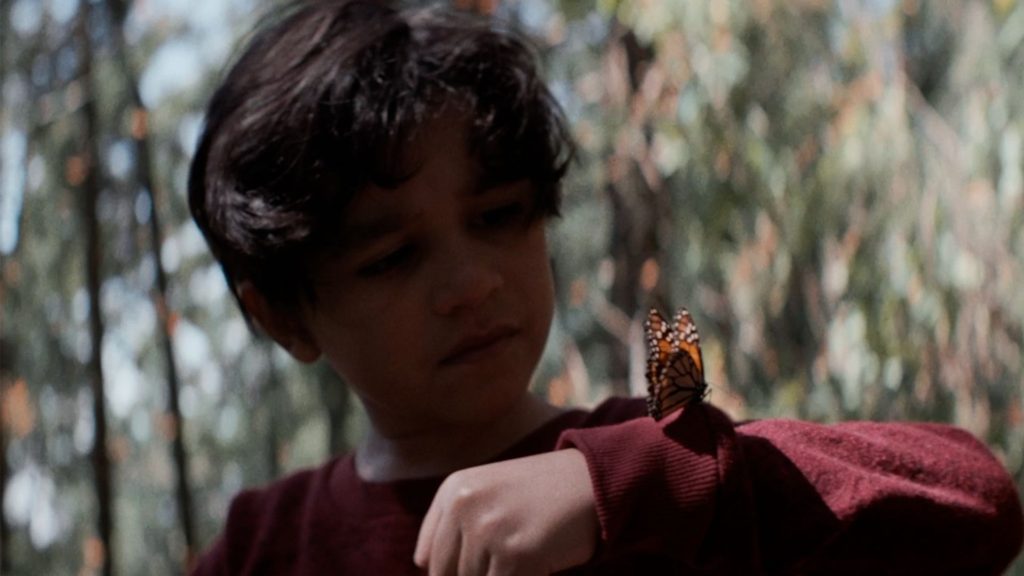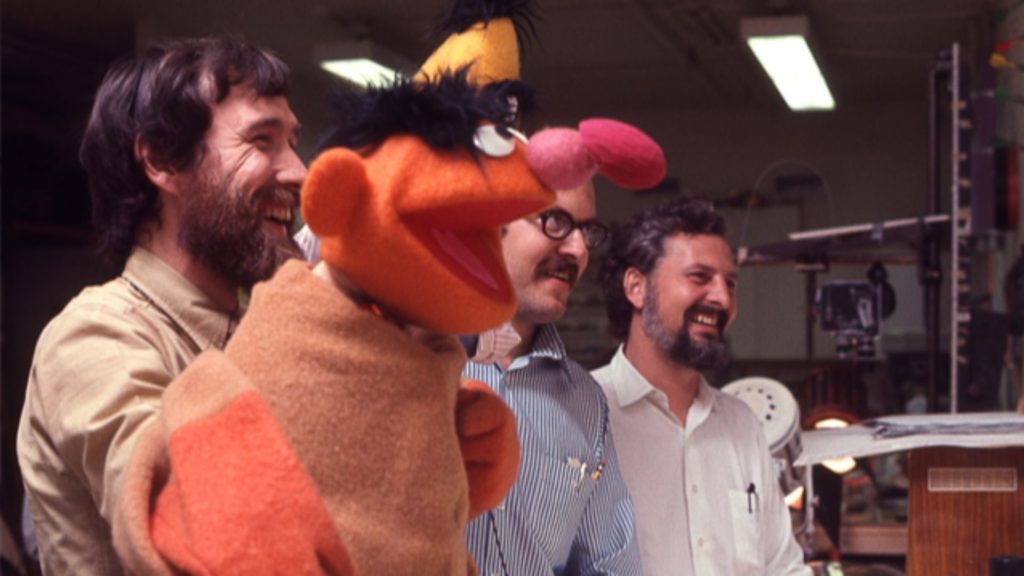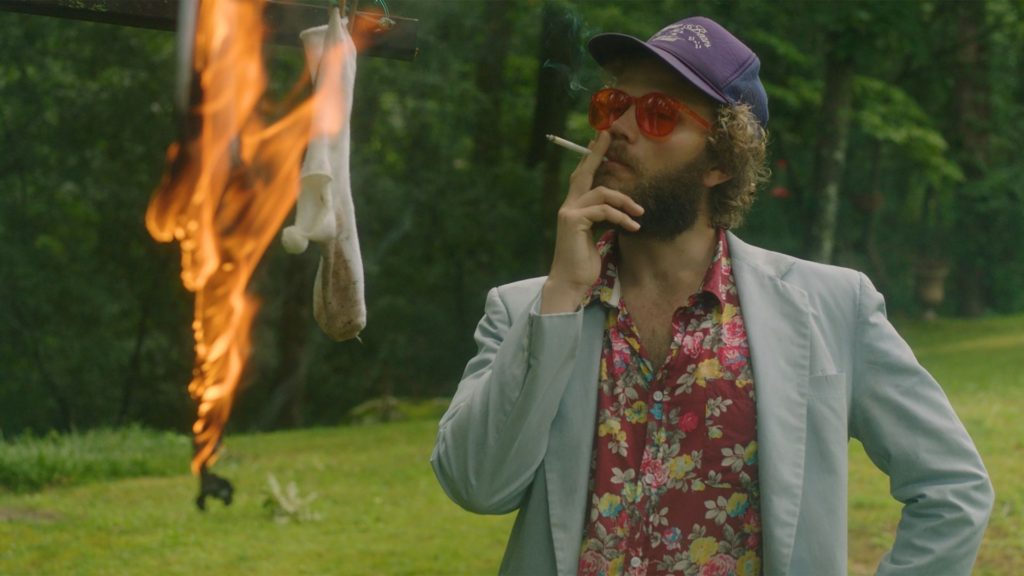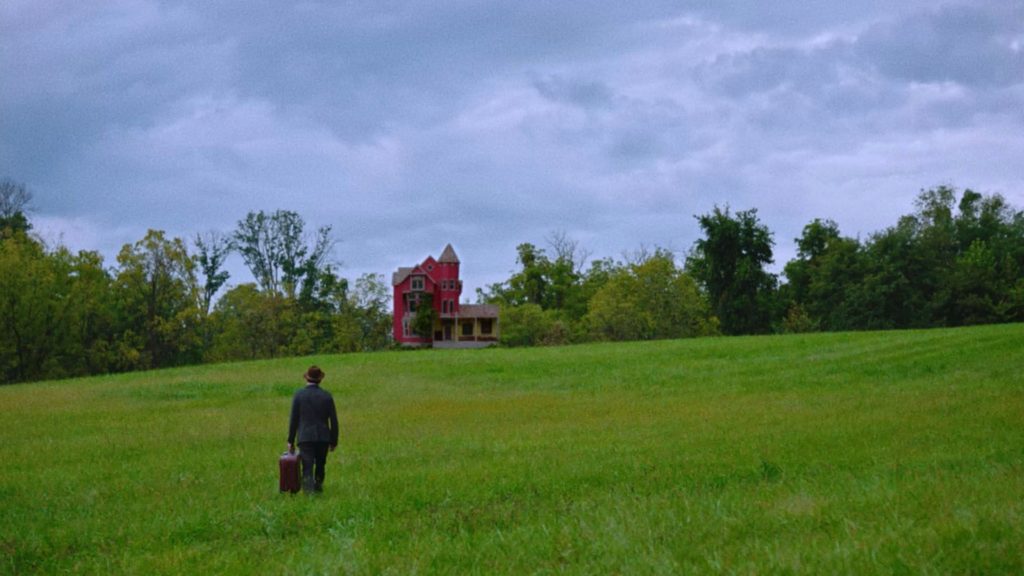
To celebrate the 2022 SFFILM, underway, now, here’s a gem from last year’s SFFILM. The very trippy and ultimately sweet fable Strawberry Mansion is set in a future where people’s dreams are taxed. Preble (Kentucker Audley), a workaday tax auditor, is assigned to audit the dreams of an elderly artist, Bella (Penny Fuller). Preble is soon plunged into an Alice in Wonderland experience with her dreams, and his dreams, and a romance to boot.
Preble puts on a gizmo to watch the dreams pf others (and comes across an even cooler gizmo that filters dreams). He even encounters Bella’s younger self (Grace Glowicki).
Strawberry Mansion is also a sharp and funny critique of insidious commercialism. A fictional brand of fried chicken keeps showing up in the story. Hilariously, Preble becomes entangled in an endless loop of upselling at a fast food drive-thru. And Preble is constantly prodded to consume by his own diabolical dream buddy (Linas Phillips). A sinister marketing plot is revealed.
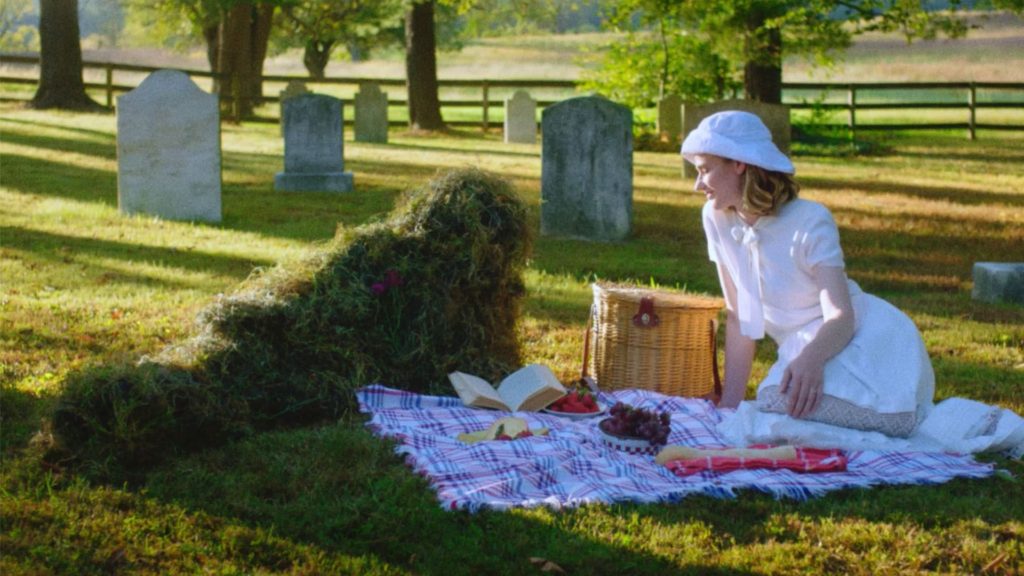
Kentucker Audley is very good as Preble, who starts out the movie mildly annoyed and evolves into various degrees of bewilderment. Audley is one of those actors who keeps showing up in something interesting (and offbeat) like Amy Seimetz’s She Dies Tomorrow and Sun Don’t Shine, or in smaller parts in especially fine films like Her Smell and Ain’t Them Bodies Saints.
As Bella, Penny Fuller radiates a contentment that ranges from ditzy to sage. Reed Birney is especially good as Bella’s sinister son.
Audley co-wrote and co-directed Strawberry Mansion with Albert Birney. They make the most of the surreal settings within dreams, and use different color palettes for each dream; the palette for Preble’s real-life bachelor apartment is pretty surreal, too.
I screened Strawberry Mansion for the 2021 SFFILM. It’s now available to stream from Amazon, AppleTV, Vudu and YouTube and can be purchased on Blu-ray after May 17.








